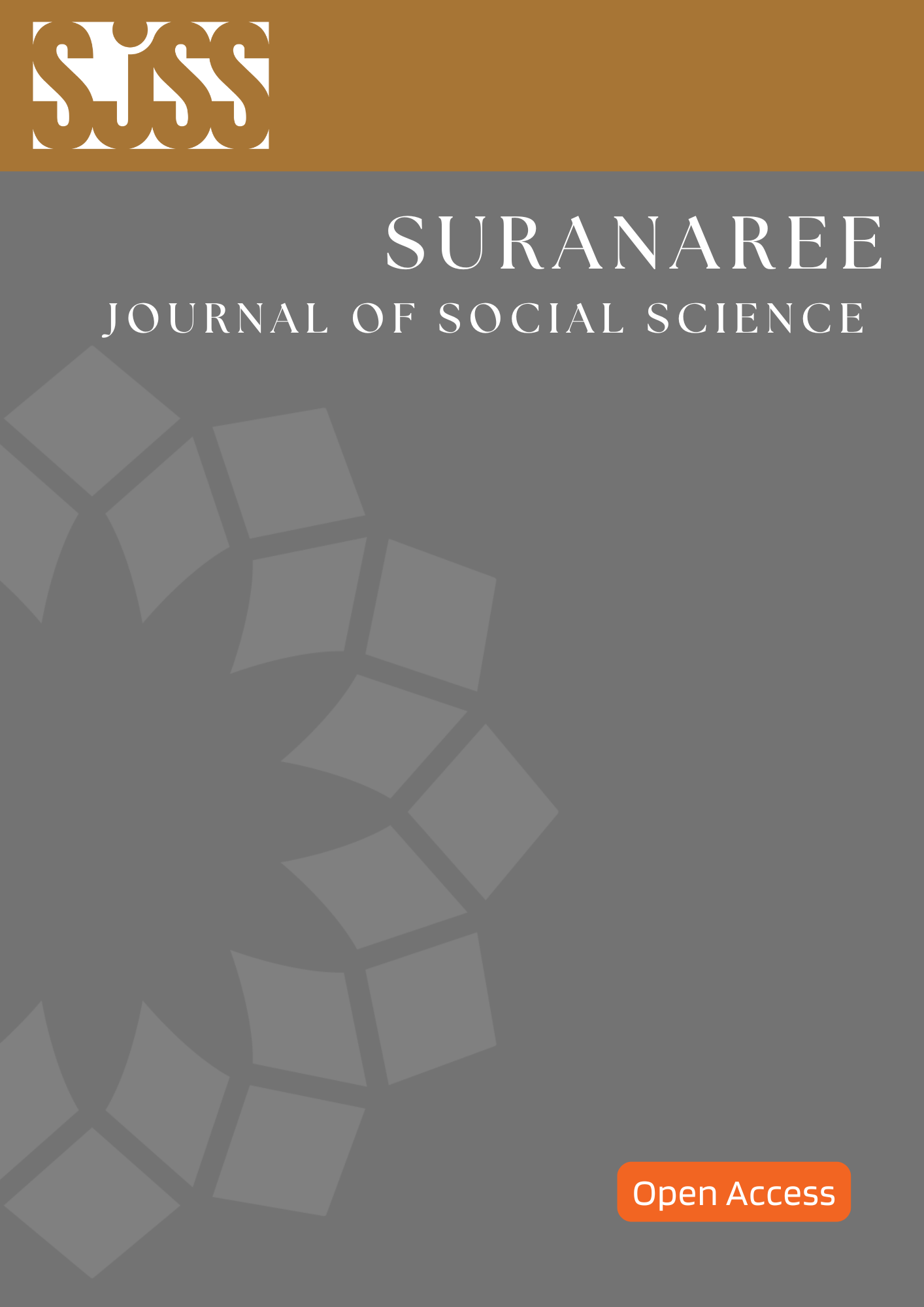A Structural Equation Modeling and Invariance Testing of Destination Loyalty between Thai and Foreign Tourist on Northeastern Historical Park
Main Article Content
Abstract
The purpose of this research was to examine the consistency of a structural equation model with the empirical data, which included the study on causal factors affecting the destination loyalty, and the test of non-variation of models between Thai and foreign tourists on Northeastern historical park. The samples were 390 Thai and foreign tourists who visited the Phimai, Phanom Rung, and Phu Phra Bat historical parks. The sampling methods used were purposive sampling and quota sampling, where 130 samples were collected from each location. The conceptual model was determined based on travel career ladder theory, which consisted of 4 main variables namely destination management plan, tourism motivation, perceived value and destination loyalty. The main data collection tool was questionnaires. Lisrel 8.72 was used for data analysis and hypothesis testing. The results revealed that the structural equation model was consistent with empirical data at a good level. Destination loyalty was indirectly caused by destination management plan and tourism motivation thru perceived value. In addition, from structural equation model, there existed a model variation between Thai and foreign tourist.
Article Details

This work is licensed under a Creative Commons Attribution-NonCommercial-NoDerivatives 4.0 International License.
References
Boonsak, K., Promsuwan, S., Wongmontha, S., & Keeratichamroen, W. (2018). The Influential Factors Toward Tourist Loyalty to Community-Based Tourism in the Lower Northeastern Part of Thailand. NRRU Commuity Research Journal. 12(1): 10-28.
Chen, J., & Gursoy, D. (2001). An Investigation of Tourists’ Destination Loyalty and Preferences. International Journal of Contemporary hospitality Management. 13(2): 79-86. https://doi.org/10.1108/09596110110381870
Cochran, W. G. (1977). Sampling Techniques. (3rd ed.). Wiley. New York: Harper & Row.
Department of Tourism. (2014). Guidelines for the Management of Ecotourism, Cultural History. Annual Report. (In Thai). Bangkok: Department of Tourism.
Dumrak, K., Prungjareansri, K., Sriprajan, W., & Pungniran, B. (2015). Antecedents Affecting on Tourists’ Destination Loyalty of Phuket Province. Journal of the Association of Researchers. 20(2): 81-93.
Hair, J.F., Ringle, C.M. & Sarstedt, M. (2011). PLS-SEM: Indeed a Silver Bullet. Journal of Marketing Theory and Practice. 19(2): 139–152. https://doi.org/10.2753/MTP1069-6679190202
Irena, P. B. (2015). Defining Target Market Based on Tourists’ Perception: The Example of Tourist Destination Dubrovnik. Journal of Economics, Business and Management. 4(5): 378-383. https://doi.org/10.18178/joebm.2016.4.5.421
Jankingthong, W., Kodcharat, Y., Panjiang, P., Klinlekha, P., Noysuwan, T., & Louisyapan, S. (2017). The Thai Tourist Loyalty Toward Than Sadet Koh Phangan National Park Suratthani Province. In The 8th Hatyai National and International Conference (pp 860-870). Office of Research and Development: Hatyai University.
Kaosaart, M., & Auntong A. (2015). Project Review the Status of Knowledge on Tourism Economy in Thailand.
(In Thai). Bangkok: National Research Council of Thailand.
Kelloway, E. K. (2015). Using Mplus for Structural Equation Modeling. Thousand Oaks, CA: Sage.
Kline, R. B. (2011). Principles and Practice of Structural Equation Modeling. (3rd ed.). New York. NY: Guilford Press.
Lien, C. H., & Cao, Y. (2014). Examining We Chat Users’ Motivations, Trust, Attitudes, and Positive Word-of-Mouth: Evidence from China. Computers in Human Behavior. 41: 104-111. https://doi.org/10.1016/j.chb.2014.08.013
McIntosh, R. W., & Goeldner, C. R. (1986). Tourism Principles, Practices, Philosophies. New York: John Wiley & Son.
Ministry of Tourism and Sports. (2015). Thailand Tourism Strategy 2015-2017. National Tourism Development Plan. (In Thai). Bangkok: Ministry of Tourism and Sports.
Moore, S. A., Rodger, K., & Taplin, R. H. (2017). Developing a Better Understanding of the Complexities of Visitor Loyalty to Karijini National Park, Western Australia. Tourism Management. 62(October): 20-28. https://doi.org/10.1016/j.tourman.2017.03.012
Nuengcharuem, P. (2013). Teaching and Learning Research. Bangkok: Chulalongkorn University Press.
Pathomsirikul, Y. (2015). Marketing Strategies and Perceived Service Quality Model Influencing Tourist Loyalty in Tourism of Pathum Thani Province. University of the Thai Chamber of Commerce Journal. 35(2): 88-103.
Pearce, P. L. (1988). The Ulysses Factor: Evaluating Visitors in Tourist Sellings. New York: Springer-Verlag. https://doi.org/10.1007/978-1-4612-3924-6
Phumiworramunee, S., Wongmonta, S., & Techakana, J. (2019). Guidelines for the Promotion of Cultural Tourism Marketing in Nakhon Phanom Province. Dusit Thani College Journal. 13(1): 184-201.
Piriyakul, M. (2015). Moderator and Mediator in Structural Equation Modeling. The Journal of Industrial Technology. 11(3): 83-96.
Ritjaroon, P. (2014). Principle of Educational Measurement and Evaluation 9th. Bangkok: House of Kermyst.
Robinson, S., & Etherington, L. (2006). Customer Loyalty: A Guide for Time Travelers. New York: Palgrave Macmillan. https://doi.org/10.1057/9780230513037
Sewana, S. (2013). Study of Tourist Places Management in Phimai District, Nakhon Ratchasima Province. MS thesis, Engineering Program in Mechanical Engineering, Suranaree University of Technology, Thailand.
Tsiotsou, R. H., & Goldsmith, R. E. (2012). Strategic Marketing in Tourism Service. Bingley. UK: Emerald Group Pub. https://doi.org/10.1108/08876041211237541
Wang, X., & Leou, C. H. (2015). A Study of Tourism Motivation, Perceived Value and Destination Loyalty for Macao Cultural and Heritage Tourists. International Journal of Marketing Studies. 7(6): 83-91. https://doi.org/10.5539/ijms.v7n6p83


